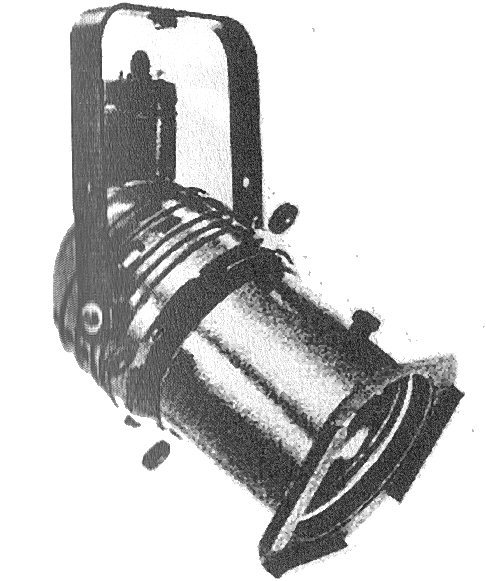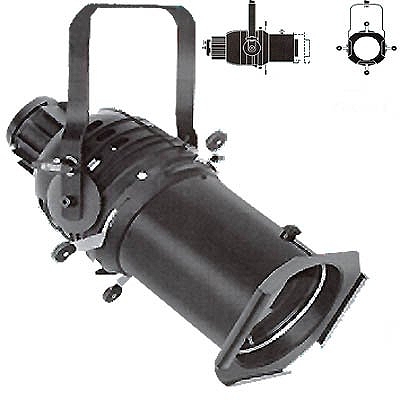You are using an out of date browser. It may not display this or other websites correctly.
You should upgrade or use an alternative browser.
You should upgrade or use an alternative browser.
Help for newbie
- Thread starterDoowop63
- Start date
cmckeeman
Active Member
Just to expand on the knowledge base of this post, DMX only has 512 adresses of controll, but inside the computer in the console you can have adresses higher, adresses 513 through 1024 in the board are sent out throguh the second universe, 513=1, 514=2, ect... so when the time comes and you want to use universe two don't try to address your moving lights to 513.
coldnorth57
Active Member
lightman02
Active Member
Is that black box in picture [HASHTAG]#2[/HASHTAG] a DMX input or output by chance? If it's an output, you should be able to connect there as well. If it's an input, that's a no-go.
Why not?
cmckeeman
Active Member
To use universe two, you would patch an address (in the board) as 513. This would correspond to DMX address 1 for any fixtures connected to universe two. to differentiate between the universes in the board you need to look at the patch, any address (called dimmer in the patch menu) 513 through 1024 is sent to the universe two outlet. but when it is sent out of the board it is sent as standard DMX so the address (Board) 513 corresponds to address (DMX) 1. so you would address your fixtures to whatever starting address you patched just offset by 513.
lightman02
Active Member
If it is an input then there is no signal coming from it to daisy to the moving lights or LED's.
You can use a gender changer to tap off that connection if you wanted to, those pins become live with DMX when DMX is fed into the system from the board. The reason for the connector is so that two DMX feeds can’t be applied at the same time. The DMX signal runs on the same internal buss that the input runs off of. Basically all the DMX chip does is take a signal sample off the line. I think the funny part is so many people talk about terminating DMX properly but no one puts terminators in their unused stage ports not realizing that they are running an unterminated system. Unless their dimmers have the termination function built in.
cmckeeman
Active Member
You can use a gender changer to tap off that connection if you wanted to, those pins become live with DMX when DMX is fed into the system from the board. The reason for the connector is so that two DMX feeds can’t be applied at the same time. The DMX signal runs on the same internal buss that the input runs off of. Basically all the DMX chip does is take a signal sample off the line. I think the funny part is so many people talk about terminating DMX properly but no one puts terminators in their unused stage ports not realizing that they are running an unterminated system. Unless their dimmers have the termination function built in.
Good point.
Les
Well-Known Member
You can use a gender changer to tap off that connection if you wanted to, those pins become live with DMX when DMX is fed into the system from the board. The reason for the connector is so that two DMX feeds can’t be applied at the same time. The DMX signal runs on the same internal buss that the input runs off of. Basically all the DMX chip does is take a signal sample off the line. I think the funny part is so many people talk about terminating DMX properly but no one puts terminators in their unused stage ports not realizing that they are running an unterminated system. Unless their dimmers have the termination function built in.
I figured that would be the case but didn't want to over-complicate things for the OP since we can't personally see his system.
Just because one CAN, doesn't mean on SHOULD.You can use a gender changer to tap off that connection if you wanted to, those pins become live with DMX when DMX is fed into the system from the board. ...
If scenario#2 above (the most likely), once one changes the input into an output, one has created a Y-cable split. From Doug Fleenor Design - DMX Primer :The gender of the panel-mount connector should have been your first clue. With DMX, "the male always goes home," home being the console. Likewise, "females have all the power, and males always want the power."
The building is likely wired one of three ways:
1) Booth DMX Input goes to dimmers' DMX Input A and Stage DMX Input goes to dimmers' DMX Input B, and dimmers are set to take either or both on an HTP basis. This is the only "proper" wiring, but means that the Stage Input cannot be used as an output.
2) The Booth DMX Input loops through the Stage DMX Input, then onto the dimmers.
3) The Booth DMX Input and the Stage DMX Input are both homerun to the dimmers, where they are two-fered on the same dimmer input.
Both 2&3 are incorrect, but you could, with an A5F-A5F turnaround or cable, use the Stage Input as an Output. IF you're going to do this, it IS STRONGLY ADVISED that you use an opto-isolator immediately after the Stage "output."
Always better to run a long cable from output#2 on the console, to the DMX devices.Splitting
Never split a DMX signal with a "wye" cable. Use a splitter device that buffers each line separately or daisy chain from device to device.
The problem with splitting the signal with a wye cable is that the signal going up one leg of the wye is reflected back down and corrupts the signal going down the other leg. The longer the legs of the wye, the worse the problem. A wye where each leg is 10 feet may work fine but may fail if the legs are increased to 100 feet. A lot has to do with the quality of the cable, the strength of the signal at the wye point, and your relationship with God.
lightman02
Active Member
It's not splitting, if it was splitting then every light and dimmer on the market is splitting. ...
See also this and subsequent post.@IAmLumenator,To answer your original question, yes, in most fixtures with a passive pass-through, the DMX actually forms a "T" with the fixture being the third wheel. The very short distance and high tolerance of the protocol allows this to work. ...It's always been a big no-no to split a DMX signal with a passive splitter, but every fixture I repair always has direct continuity between the in and out ports. I understand reflections are an issue, is this possible because the split happens so close to the fixture electronics? ...
Which schematics exactly?... Look at the schematics and tell me what you see.
It sounds like you have two types of ellipsoidal reflector spotlights.
The older "incandescent" Altman 360, whose lamp cap uses a medium prefocus socket that uses a 500W EGE lamp (can also use 750W EGG lamp). Above, you described these radial ERS units as "45degree lamp housing."

The other ia an Altman 360Q axial ERS Leko, which has a medium bipin socket and uses either a 500W EHD or 750W EHG lamp. I would suggest you start using a newer lamp, the 575W GLC, which has an improved, more compact, filament geometry.

Both the 360 and 360Q use a cap gasket, piece of stamped metal that fits between the lamp cap and the fixture. --I can't remember right off but I believe these are interchangeable between the two.

Often lost/unused, but important to control unwanted light spill out of the back of the luminaire and retail for about $3-5 each.
The older "incandescent" Altman 360, whose lamp cap uses a medium prefocus socket that uses a 500W EGE lamp (can also use 750W EGG lamp). Above, you described these radial ERS units as "45degree lamp housing."

The other ia an Altman 360Q axial ERS Leko, which has a medium bipin socket and uses either a 500W EHD or 750W EHG lamp. I would suggest you start using a newer lamp, the 575W GLC, which has an improved, more compact, filament geometry.

Both the 360 and 360Q use a cap gasket, piece of stamped metal that fits between the lamp cap and the fixture. --I can't remember right off but I believe these are interchangeable between the two.

Often lost/unused, but important to control unwanted light spill out of the back of the luminaire and retail for about $3-5 each.
Doowop63
Active Member
The 360 is what I am looking at right now. The lamp caps are removed from some and in a drawer. Would like to be safe and replace the wiring, as I am unsure of the condition of the lamp caps in the drawer. Thanks for the lamp number. We are a struggling Community theatre and need to repair as many thing as possible for the least amount of cost. But I guess that's everybody's issue.
RE: 360 lamp caps,
Does the wiring really need to be replaced? Is it asbestos? Is the insulation missing / cracking / deteriorated? I believe Production Advantage and others have "wiring kits" available, which may or may not include a new socket. (In the case of 360Q, the wires are permanently attached to the socket.)
As for checking condition of MPF sockets, the center contact button is spring-mounted and should move freely and spring back with moderate amount of force. Any signs of blackening of the contact is a sign of arcing and the socket should probably be replaced.
There are lots of threads discussing the medium prefocus socket used in both radial ERS and smaller fresnels. Here's one: Conventional Fixtures - Century-Strand socket for 2331 | ControlBooth . Lots of other threads about replacing asbestos instrument leads. Just start typing stuff into the search box.
State where you are in New York, and perhaps a nearby CB member would be willing to drop by and give you an assessment to help you develop a plan of attack. Failing that, is there a college or university nearby? Don't be afraid to reach out to either the Technical Director or one of his/her students.
Does the wiring really need to be replaced? Is it asbestos? Is the insulation missing / cracking / deteriorated? I believe Production Advantage and others have "wiring kits" available, which may or may not include a new socket. (In the case of 360Q, the wires are permanently attached to the socket.)
As for checking condition of MPF sockets, the center contact button is spring-mounted and should move freely and spring back with moderate amount of force. Any signs of blackening of the contact is a sign of arcing and the socket should probably be replaced.
There are lots of threads discussing the medium prefocus socket used in both radial ERS and smaller fresnels. Here's one: Conventional Fixtures - Century-Strand socket for 2331 | ControlBooth . Lots of other threads about replacing asbestos instrument leads. Just start typing stuff into the search box.
State where you are in New York, and perhaps a nearby CB member would be willing to drop by and give you an assessment to help you develop a plan of attack. Failing that, is there a college or university nearby? Don't be afraid to reach out to either the Technical Director or one of his/her students.
Similar threads
Control/Dimming
Advice for choosing a light console
- Replies
- 7
- Views
- 2K
- Replies
- 7
- Views
- 2K
- Replies
- 21
- Views
- 3K
Users who are viewing this thread
Total: 1 (members: 0, guests: 1)


